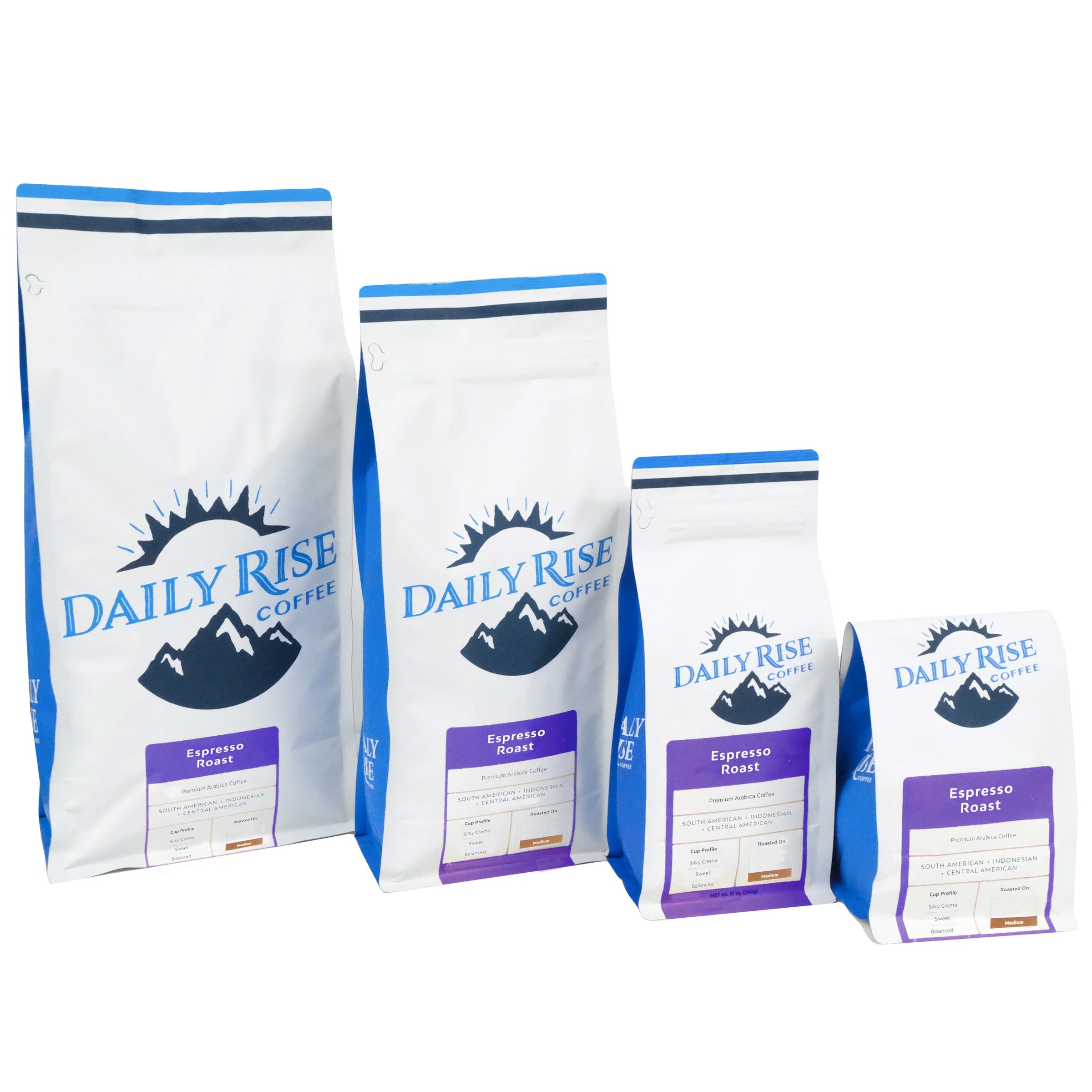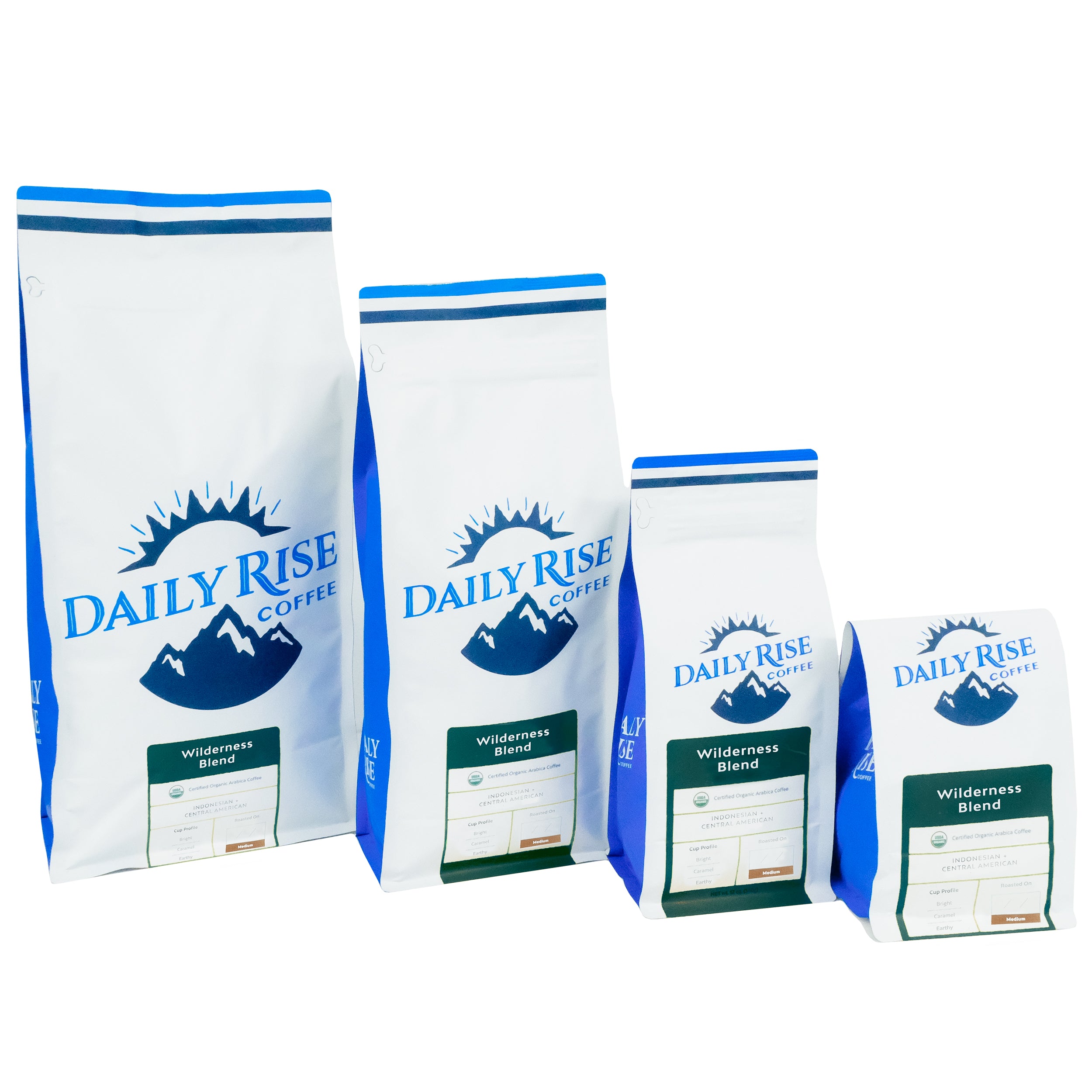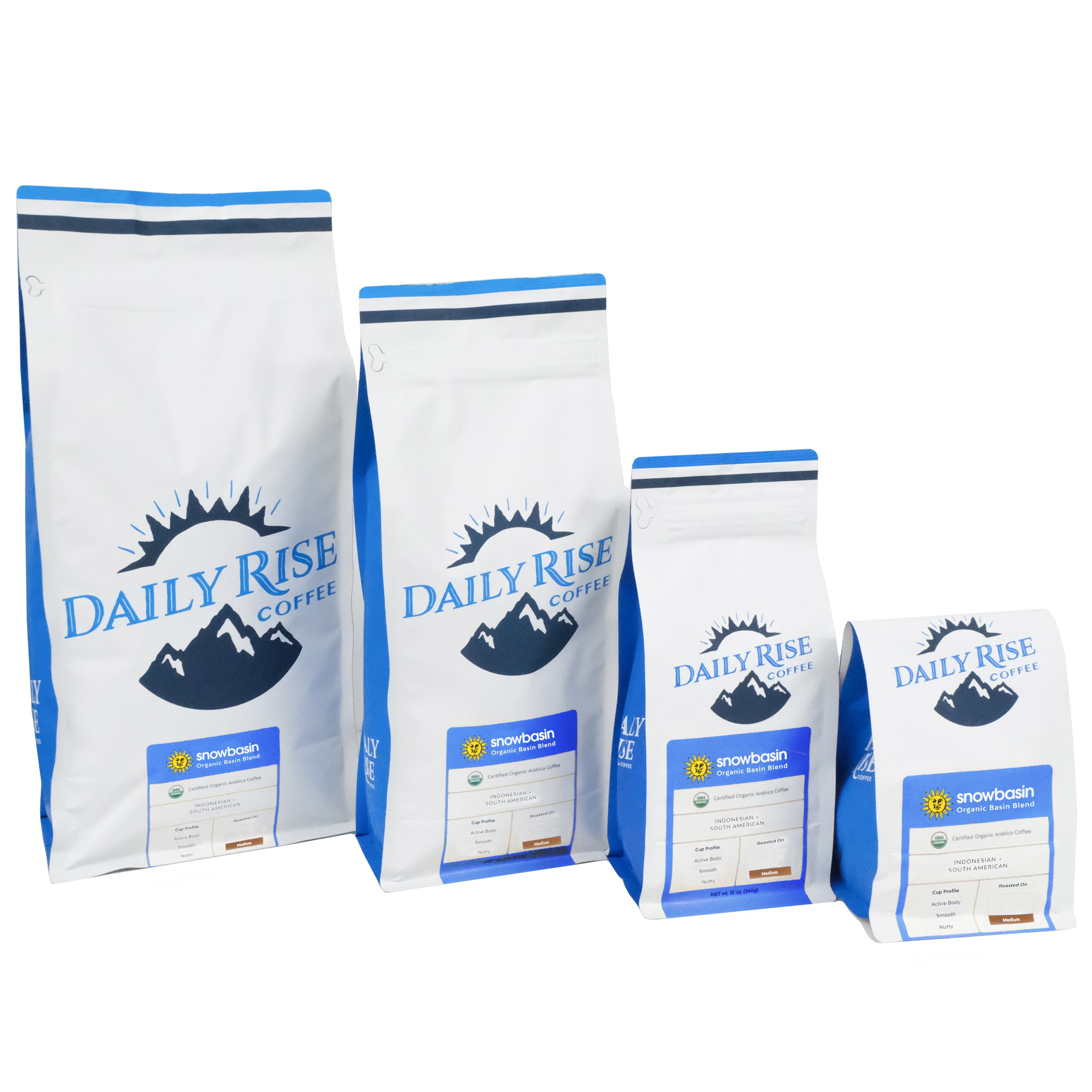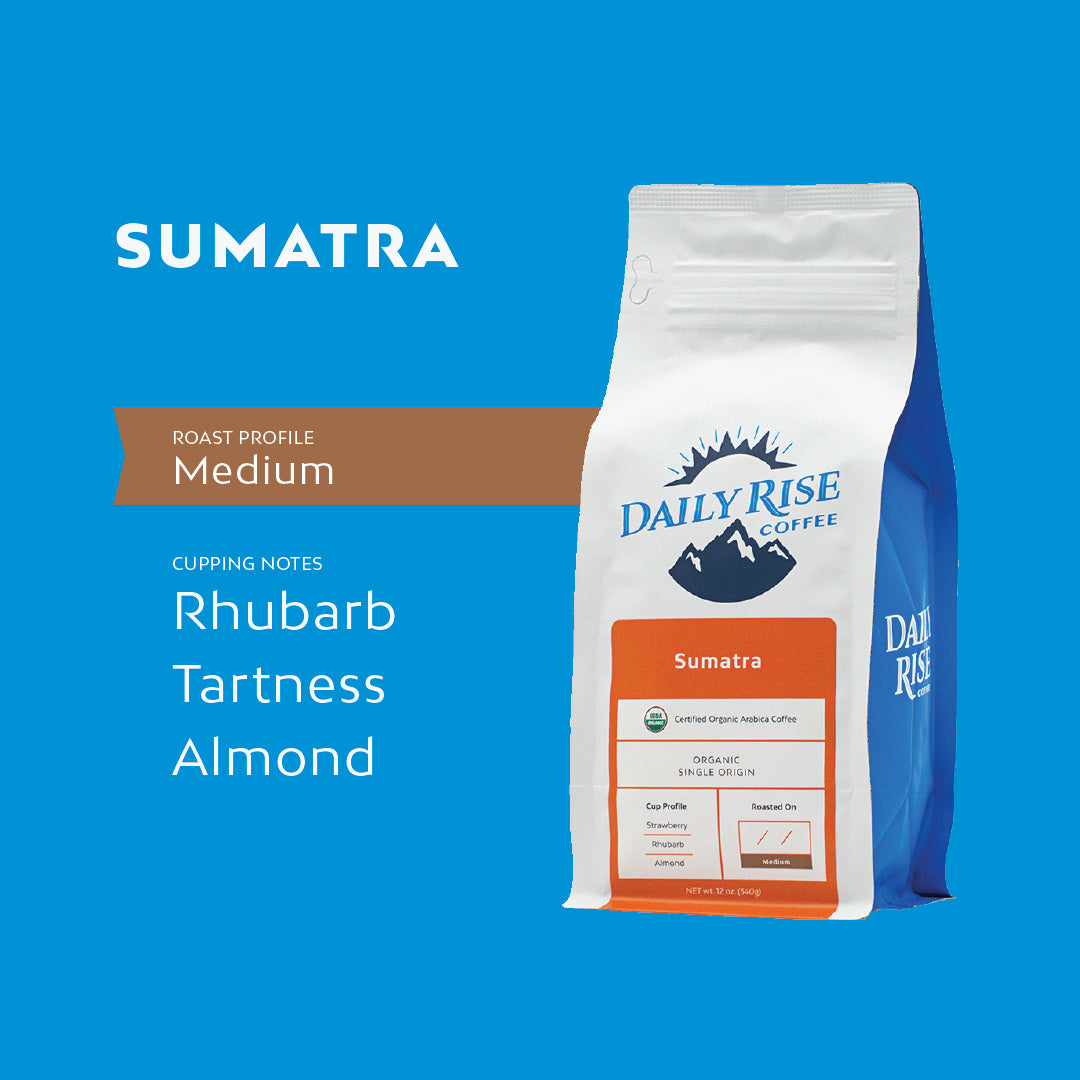Acidity - In coffee, acidity is a desirable characteristic that refers to the brightness or liveliness of the coffee's flavor, and can be influenced by factors such as the coffee's origin, altitude, and processing method.
Aeropress - The AeroPress is a manual coffee maker created by AeroPress, Inc. and invented by Alan Adler, which comprises of a cylindrical chamber, a plunger with an airtight silicone seal resembling a syringe, and allows for steeping ground coffee beans and water followed by pressing the plunger through the chamber to force the mixture through a filter.
Affogato - Affogato is a luscious dessert that showcases the perfect combination of rich espresso and velvety vanilla ice cream.
Aged Coffee - Aged coffee is a special type of coffee that undergoes a meticulous aging process, which typically spans from six months up to three years. During this time, the beans are attentively monitored, and regularly rotated to ensure even aging across all coffee bags. The process is akin to the aging of wine or whiskey, and as a result, the coffee develops a distinct set of flavors and aromas, which are entirely unique to this particular style of coffee.
American Roast - American Roast, which is also referred to as City or Breakfast Roast, is a type of coffee roast that results in beans with a medium brown color and a non-oily surface. This roast is the traditional and preferred option for American coffee and is known to produce a complex and flavorful cup of coffee.
Americano - An Americano is a delicious coffee drink that can be served hot or iced. It is made by adding a shot of espresso to water, creating a delightful blend of rich coffee flavor and smooth texture.
Arabica - Arabica is a widely popular variety of coffee that is made using the beans of the coffee arabica plant. This type of coffee boasts a range of complex flavor notes, which can include hints of chocolate, nuts, caramel, fruit, and/or berries, among others. As a result, it is highly sought after by coffee enthusiasts around the world.
Aroma - Aroma refers to the distinct fragrance or smell of coffee, which is a crucial aspect of the overall coffee drinking experience. With over 800 aromatics present in coffee, it is also responsible for many non-taste attributes, such as the feeling of freshness, intensity, and complexity. In fact, the quality of coffee can often be judged based solely on its aroma, as it can be an indicator of its origin, roast level, and flavor profile.
Balance - In the world of coffee, balance is a term used to describe a coffee that has a complex and nuanced flavor profile, where no one characteristic overpowers or dominates the rest. Rather, the various flavors and notes present in the coffee are in harmony, creating a well-rounded and enjoyable drinking experience. Achieving balance is often considered a hallmark of high-quality coffee, and is a skill that expert roasters and baristas work hard to achieve.
Bland - Bland refers to a taste or flavor that is lacking in distinctiveness or character.
Barista - A barista is a professional who specializes in preparing and serving a variety of coffee and espresso beverages.
Bean - A coffee bean is the seed of the Coffea plant, which is harvested from the pit inside the red fruit, commonly known as a coffee cherry, and is then dried and processed to become the coffee that we know and love.
Bitter - In coffee, bitter is one of the five basic tastes, which is a flavor sensation detected towards the back of the mouth, characterized as a twinge or aftertaste that is primarily caused by caffeine and other alkaloids present in the coffee.
Bloom - Bloom refers to the release of carbon dioxide from freshly ground coffee beans when hot water is poured over them, creating a light brown, volcano of foam on top of the coffee.
Breve - A hot or iced creamy coffee beverage made with half and half and espresso.
Brew Ratio - Brew ratio in coffee refers to the proportion of coffee beans to water used when brewing, and varies depending on the specific brewing method being used. Achieving the correct brew ratio is crucial for achieving optimal flavor and balance in the final cup of coffee. A good general rule of thumb is 15:1 ratio of water to coffee.
Brew Temperature - Brew temperature refers to the temperature of the water used when brewing coffee, and is dependent on several factors, including the type of coffee, roast level, grind size, variety, and other unique characteristics of the beans. Achieving the correct brew temperature is critical in extracting the desired flavor and aroma from the coffee, and can significantly impact the overall quality of the final brew. Brew temperature is also dependent on the elevation when brewing. Water boils at lower temperatures at higher altitudes.
Brew Time - The duration of time the coffee is in contact with water during the brew process. Dependent on the coffee bean characteristics such as roast level, grind size, and variety is all critical in achieving optimal flavor and aroma.
Bright - In coffee, "bright" is a flavor characteristic used to describe coffees that have high, acidic notes.
Briny - Briny is a salty taste in coffee that can be caused by under-extracting coffee or using mineral-rich water during the brewing process.
Burr Grinder - A burr grinder, also known as a burr mill, is a machine that utilizes two revolving burrs to crush coffee beans between a moving grinding wheel and a stationary surface.
Cafe Au Lait - A hot coffee beverage made of equal parts steamed milk and drip coffee.
Caffeine - A natural stimulant found in many plants, including tea, coffee and cacao.
Cappuccino - A hot coffee beverage made with espresso and topped with frothed microfoam milk.
Chemex - A manual pour-over style glass coffeemaker, invented in 1941 by Peter Schlumbohm and inspired by the shape of an Erlenmeyer flask.
Clean - A term used to describe coffee that has a balanced acidity and sweetness with no other flavor defects.
Cascara - The fruit that coffee beans come from, referred to as "cherry" due to its red color, which imparts flavor to the coffee beans.
Cold Brew - A type of coffee brew where coffee grounds are soaked in cold water for at least 12 hours, resulting in a strong, concentrated coffee. Typically higher in caffeine and lower in acidity.
Complexity - A term used to describe the range of flavors in coffee, with higher complexity ratings given to coffees with more subtle or distinct flavors.
Cortado - A hot coffee beverage consisting of equal parts espresso and steamed milk, with "cortado" meaning "the cut" in reference to the milk cutting the espresso.
Crema - The tan, silky froth that sits on top of espresso, formed by microbubbles of CO2 gas suspended in water attaching to the natural oils and fats present in coffee
Crop - A cultivated plant or animal product, such as coffee, that is grown in bulk and harvested for profit.
Cup of Excellence - The most prestigious competition and auction for high-quality coffees, held annually in several countries to identify and reward the highest quality coffees produced by farmers.
Cupping - Is a multi sensory technique using your sight, smell and taste to grade coffee. Notorious for the slurping noise made when aspirating the coffee from a spoon across the pallet of your tongue.
Dark Roast - Refers to coffee beans that have been roasted into second crack and beyond that have a dark brown color, resulting in a chocolatey/smoky taste and an oily surface.
Decaffeinated (Decaf) - Coffee that has had the majority of the caffeine content removed or processed out, resulting in a tiny amount of caffeine compared to regular coffee.
Degassing - The natural process in which carbon dioxide gas is released from recently roasted coffee.
Doppio - Also known as doppio espresso, it's a double shot of espresso.
Drip Brew - A coffee brewing method that utilizes a filter, hot water, and coffee grounds, with the hot water slowly dripping out of the coffee. An example of this is your standard home brewer. This can also be done cold, like a Kyoto style drip coffee.
Dry Processed Coffee - One of the four types of coffee processing, where the husk of the coffee fruit is removed after it has dried.
Earthy - Refers to an aroma characteristic of fresh earth or wet soil that can have positive or negative connotations depending on the context.
Elevation - Refers to the height above sea level at which coffee is grown, which has a significant impact on its flavor and quality.
High Elevation - Refers to coffee grown at high elevations, typically above 4,000 feet, which tends to have a more complex and nuanced flavor profile due to slower bean development.
Low Elevation - Refers to coffee grown at lower elevations, typically below 2,000 feet, which tends to have a simpler and less distinctive flavor profile due to faster bean development.
Cooler Climate - The cooler climate at higher elevations slows down the growth of coffee beans, resulting in denser beans with a more concentrated flavor.
Varied Terrain - Higher elevations tend to have more varied terrain and soil types, which often contribute to the unique and distinctive flavors found in coffee grown in those regions.
Espresso - A coffee shot resulting from a brewing method in which hot water is forced under pressure through a compressed bed of finely ground coffee
Estate-Grown Coffee - A specific type of single-origin coffee that is grown on one massive farm or a collection of farms that all process their coffee at the same mill.
Extraction - The process of transferring desirable compounds from coffee beans to hot water during brewing.
Fair Trade - An arrangement designed to help producers in growing countries achieve sustainable and equitable trade relationships by paying higher prices to exporters and striving to compensate workers "fairly".
Fellow - Thoughtful and elegant designed equipment to enhance your coffee brewing and grinding experience.
Fetco - Fetco is a leading food & beverage equipment company based in the United States. Since 1987, they have been at the forefront of coffee brewing equipment manufacturing and continue to create innovative solutions for the coffee industry.
Filter - A porous device used to remove impurities or solid particles from a liquid passed through it, which in coffee, can refer to a paper or metal/mesh filter used to hold the coffee grounds when brewing.
Finish - Refers to the immediate sensation after the coffee is spit out or swallowed, in which some coffees further develop their flavor.
Flat White - A hot coffee beverage made with espresso and microfoam, similar to a latte but smaller in volume and has less microfoam, therefore having a higher ratio of coffee to milk.
Flavor - A subjective sensory description of coffee's aromatic and taste characteristics, including but not limited to body, acidity, aroma, bitterness, sweetness, and aftertaste.
French Press - An immersion-style coffee brewer typically made of glass and has a mesh filter that is plunged down on the coffee when it's done brewing.
Green Coffee - Unroasted coffee beans that are bought by coffee roasters from producers.
Ground Coffee - Coffee that has been ground to a particular particle size based on how it will be brewed. Examples are fine espresso grind or coarse french press grind.
Ground Control Cyclops - A unique coffee brewer made by Voga. This brewer steeps, stirs, vacuums and aerates the coffee in multiple micro batches. Producing amazing hot coffee, espresso like concentrate and even a cold brew style product.
Honey Processed Coffee — One of the four coffee processing methods in which part of the coffee cherry, called mucilage, is left on the coffee bean while it is drying. The mucilage has a sticky texture and imparts a sweet flavor on the coffee beans; it is also golden amber in color like honey.
Hulling —The process of removing the skin from coffee cherry fruit before it is sorted.
Italian Roast or French Roast - is a dark coffee roast with very oily beans. This is usually the darkest roast available. Flavors of bold and smoky normal follow these roasts
Immersion — Any manual brewing method where coffee grounds are immersed in water.
Kalita Wave — A manual pour over style dripper with a flat bottom and three extraction holes.
Kiss - whipped cream kiss on top of your drink. “Just the kiss”
Kona - Coffee that is grown in Hualalai and Mauna Loa in the North and South Kona Districts of the Big Island of Hawaii. “Kona” is the only major producer of coffee in the US.
Kopi - Indonesian for coffee. Most commonly known for kopi luwak, an expensive Indonesian coffee made from partially digested beans, eaten and defecated by a civet.
Latte - A coffee beverage that can be served hot or iced, made with espresso and milk. A hot 12oz latte will have 2 shots of espresso and 8 ounces of steamed milk with a thin layer of foam on the top.
Latte Art - A technique of making a latte that involves pouring microfoam (from steamed milk) into a shot of espresso to create a design or pattern on the drink's surface.
La Marzocco - Is an espresso machine manufacturer in Italy. They were instrumental in the birth of specialty coffee in America in the 1980s and continue to pioneer the innovation in espresso machines.
Light Roast - Is referred to the roasting process when the beans are lighter in color and higher in caffeine. This roast profile brings out fruity, sugary and floral notes out of the coffee; complementing the origin/estate it was grown in.
Macchiato - An espresso coffee drink with a dollop of milk foam on top. This drink has the highest espresso to milk concentration of any espresso based drinks. Not to be confused with a caramel macchiato which is really a latte with caramel flavor.
Machine Drying - The process of drying coffee beans by tumbling them in rotating drums after removing them from the coffee cherry.
Matcha - Is a finely ground powder of specially grown and processed green tea leaves. It has a high level of caffeine and a sustained effect. It is traditionally served as a whisked shot. Can also be added with milk to create a matcha latte.
Medium Roast- Is a description of coffee that is usually roasted past the first crack and dropped before the second crack. Beans are medium brown in color and smooth textured. Flavor notes of chocolate and nuts are very common.
Micro-Lot Coffee - Coffee traceable to a particular region, small farm, or processing station.
Mocha - A hot or iced coffee beverage made with chocolate milk and espresso.
Moka Pot - A stovetop coffee maker made of aluminum that produces steam in the bottom chamber, pushing hot water through coffee grounds into the top chamber.
Monsooning - The process in which coffee is exposed to seasonal monsoon winds, reducing its acidity and developing a chocolatey aroma with notes of spice and nuts.
Natural Processed Coffee - This is one of the four coffee processing methods where the whole coffee cherry is dried before the fruit enclosing the coffee bean is removed, creating a cup of coffee with a heavy body and fruity flavor.
New Crop - This refers to coffee that has just been harvested and processed and is immediately delivered for roasting.
Nitro - This term refers to coffee that is served on tap and infused with nitrogen bubbles, providing it with a beer-like appearance and a smooth texture.
Old Crop - Coffee that has been held in warehouses for an extended period before being delivered for roasting.
Organic - Coffee that is grown and processed without the use of synthetic fertilizers or pesticides
Patio Drying - One of the two primary coffee drying methods. Coffee beans are raked and spread out thinly onto raised beds, and left to dry in the sun.
Peaberry - A coffee bean that is small, round, and contains only one seed. Regular coffee cherries produce two seeds. Peaberries occur due to a natural mutation where one ovule fails to develop, and a larger and rounder seed grows inside. These seeds are considered superior in flavor.
Percolator - A type of coffee pot that continually cycles boiling or nearly boiling water through the grounds using gravity until the desired strength is reached.
Piston Machine - A manual espresso machine powered by a person pumping a lever, which exerts pressure on the hot water and forces it through a compact bed of ground coffee to brew espresso.
Pretty style - chocolate or caramel drizzle inside the cup
Producer - A term used interchangeably with coffee farmer, meaning a person who produces or harvests coffee.
Portafilter - A ladle-like device that holds compacted ground coffee and screws into an espresso machine.
Pour Over Brewing - A manual coffee brewing method where hot water is streamed into a bed of coffee grounds in a circular motion and left to drip through a filter. Produces a crisp and clean cup of coffee.
Puck - The compressed coffee grounds remaining after being brewed by an espresso machine or Aeropress. It's called a puck because it resembles the shape of a hockey puck.
Pull (Espresso) - The process of extracting an espresso shot. It is called a "pull" because, before motorized espresso machines were invented, humans had to pull a lever to extract espresso, hence the name pull.
Pulping - The process of removing the outer layer of the coffee cherry to reveal the seed inside. This is done after the cherries are sorted and cleaned.
Processing Method - Refers to any one of four ways in which the coffee Is processed after being harvested and before being roasted. The Four processing methods are: Honey Process, Natural Process, Washed Process and Wet Process.
Q Grader - A licensed professional in the coffee industry who is trained to evaluate and score the quality of roasted coffees. They are akin to wine sommeliers.
Quakers - Coffee beans that do not turn dark brown during the roasting process, often due to not reaching maturity before harvesting. Specialty coffee beans must be free of Quakers to be classified as such.
Red Eye - A coffee beverage made by adding one or two shots of espresso to a cup of drip coffee. The resulting drink is stronger and more caffeinated than a regular drip coffee.
Ristretto - An espresso shot made with the same amount of coffee as a regular espresso shot, but with less water. This results in a shorter, more concentrated shot of espresso with a sweeter taste and thicker consistency.
Roasting - The process in which green coffee beans are heated to a specific temperature, causing them to develop the aroma, flavor, and color that we associate with coffee.
Roast Date - The date on which coffee beans were roasted. It's important to check the roast date when buying coffee to ensure freshness and optimal flavor.
Robusta - A type of coffee plant that produces beans with a higher caffeine content and a stronger, more bitter taste than Arabica beans. Robusta beans are often used in blends to add depth and complexity to the flavor profile.
Seasonal Coffee - Coffee that is harvested only during specific seasons when it is at its peak flavor. Roasters will classify certain beans as seasonal when they are in limited availability.
Shade Grown Coffee - Coffee that has been grown under the shade of trees. When not exposed to full sun the cherries mature slower and become denser. This allows the beans to hold up better to the heat of roasting. Usually yielding a better tasting cup of coffee
Shot (Espresso) - A single serving of espresso, typically 1 ounce in volume.
Single Origin Coffee - Coffee beans that come from a specific region, crop, or country, and are not blended with other types of coffee.
Single Estate Coffee - Coffee beans that come from one particular farm or estate.
Siphon - A type of coffee brewer that uses vapor pressure and gravity to produce coffee. It typically consists of two chambers, one filled with water and the other with coffee grounds.
Specialty Coffee - The highest quality of coffee available, defined by the Specialty Coffee Association of America (SCAA) as coffee that is free of primary defects, properly sized and dried, and has no quakers.
Specialty Coffee Association of America (SCAA) - A non-profit organization founded in 1982 for the specialty coffee industry. It provides standardization and scientific testing in the specialty coffee industry.
Strip Picking - A method of coffee harvesting where all the coffee cherries on a branch are removed at once with a single motion.
Swiss Water Decaf - A chemical free process that removes 99.9% of the caffeine from the coffee.
Tamper - A tool used in espresso brewing that helps to pack ground coffee evenly into the portafilter basket. It typically has a flat circular base that is pressed onto the coffee to create a compact and level surface.
Terroir - The environmental factors that influence the taste of a coffee, such as soil, climate, altitude, and geography. These unique characteristics are specific to a certain region or farm and cannot be replicated anywhere else.
Trigonelline - A bitter-tasting alkaloid that is naturally found in coffee beans. It contributes to the bitter flavor profile of coffee and is also responsible for the sweet aroma that is released during brewing.
Typica - A variety of Arabica coffee that is one of the oldest and most traditional varieties. It is known for its delicate and nuanced flavors and is commonly grown in Central and South America.
Turkish Coffee - A method of coffee preparation that involves boiling finely ground coffee in water and serving it unfiltered. The coffee is typically sweetened to offset its strong and bitter taste, and it is often brewed in a traditional copper or brass cezve pot.
Varietal - Similar to wine, a coffee varietal is a type of coffee made from a single type of coffee. For example, gesha, typica, or bourbon coffees are all varietals.
V60 - A manual pour over style dripper, most known for its sleek appearance and spiraling ridge design. The interior ripples are inspired by the shape of the parabola.
Washed Coffee - One of four coffee processing methods where the fruit is stripped off of the bean after being harvested. The beans are then washed, removing any remaining sticky mucilage from the bean, before being dried.
Wet Processed Coffee - One of four coffee processing methods where the fruit is separated from the beans with water before being dried.
White Mocha - A hot or iced coffee beverage made with milk, espresso, and white chocolate.
Waves of Coffee:
1st Wave Coffee - The first coffee wave lasted from the mid-1800s to the 1980s, and it was defined by the availability of mass-produced, canned coffee that was marketed for its affordability and convenience; making coffee a popular beverage but with more emphasis on accessibility and quantity than on quality or variety.
2nd Wave Coffee -The second wave of coffee, which emerged in the 1980s and lasted until the early 2000s, was characterized by the popularization of specialty coffee, the introduction of espresso-based drinks, and a focus on the overall coffee experience.
3rd Wave Coffee - The third wave of coffee, which began in the early 2000s and continues today, is defined by a focus on the sourcing and preparation of high-quality, specialty coffee beans, as well as an emphasis on the craft of brewing and highlighting the unique characteristics of each coffee origin.






















